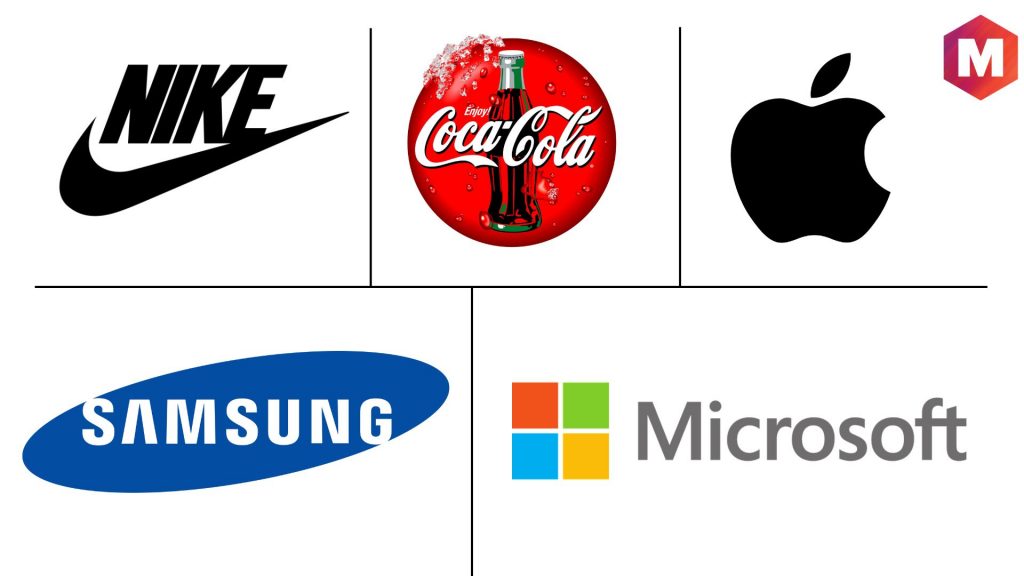Table of Contents
What Is Commercialization?
Commercialization is the process or activity through which a good or service is introduced into the market. It is also the stage in the product life cycle when a product or service is first made available for purchase. Commercialization typically follows research and development (R&D) and can include activities such as marketing, packaging, pricing, and distribution.
Commercialization is often confused with marketing, but marketing is only one aspect of commercialization. Commercialization also encompasses other activities such as product development, packaging, and pricing. Commercialization is critical in bringing a new product or service to market and can make or break a business.
Definition
Commercialization is defined as the process of making a product or service available for sale. Commercialization entails production, marketing, and distribution. Commercialization generally starts with the development of a new product or service. Development efforts may be undertaken by an individual, a team, or a company.
A commercialization strategy takes into account the business environment, the target market, distribution channels, and other key factors. For example, in technology commercialization, a key function is to assess the potential market for a new product or service. Other key functions critical to commercialization efforts include developing a business plan, identifying potential customers, assessing the competition, product development process, development costs, and multiple factors to ensure economic benefit for the business.
Description
Business leaders face several critical functions when it comes to commercializing their products or services. They must develop efforts to assess the business environment, identify key takeaways for their product, and determine how best to distribute their product through channels such as local grocery stores.
By taking these key steps, businesses can increase their chances of success. The key takeaways commercialization suggests are assessing the business environment, identifying product key takeaways, channelizing best development efforts, and finally choosing the right distribution channels. For example, local grocery stores are a great way to get products in front of potential customers after going through different steps of commercialization.
It also requires businesses to be mindful of the ever-changing business landscape. Leaders must monitor their product’s progress and make necessary changes along the way. Doing so will help businesses ensure that their product is successful in the long run. Following these key steps, businesses can commercialize their products or services successfully.
Why is Commercialization Important?
Commercialization is important because it is the process that takes a product or service from conception to market. Commercialization bridges the gap between research and development (R&D) and marketing. It encompasses all of the activities necessary to bring a product or service to market, including product development, packaging, pricing, and distribution. Some of the reasons behind the importance of commercialization are-
- Ensures that a product or service is ready for market: A product or service may have gone through R&D and been found to be feasible and viable. However, it is only when the product or service is commercialized that it is brought to market. Commercialization includes all of the activities necessary to make a product or service market-ready, such as product development, packaging, pricing, and distribution.
- Makes a product or service marketable: Commercialization encompasses marketing activities such as market research, target market segmentation, and promotion. These activities are important in making a product or service marketable and ensuring that it reaches the right customers.
- Ensures that a product or service is profitable: One of the goals of commercialization is to ensure that a product or service is profitable. This includes activities such as pricing and distribution, which are important in making a product or service economically viable.
- Helps to build a brand: Commercialization can help to build a brand for a product or service. Branding is important in differentiating a product or service from its competitors and making it recognizable to potential customers.
Elements of a Commercialization Process
Research
The first step in the commercialization process is research. This step involves conducting market research to determine the feasibility of a product or service and to assess customer needs and wants.
Disclosure
The second step in the commercialization process is disclosure. This step involves disclosing the invention to potential licensees or investors. The disclosure should include enough information about the invention so that others can assess its potential.
Assessment
The third step in the commercialization process is assessment. This step involves assessing the invention to determine its potential for commercial success. This assessment should include an evaluation of the invention’s market potential, competitiveness, and profitability.
Protection
The fourth step in the commercialization process is protection. This step involves protecting the invention from competitors. This can be done through patenting, trademarking, or trade secret protection.
Marketing
The fifth step in the commercialization process is marketing. This step involves promoting the invention to potential customers. Marketing activities can include advertising, public relations, and market research.
Licensing
The sixth step in the commercialization process is licensing. This step involves granting a license to another party to manufacture, sell, or use the invention. Licensing can be an important source of revenue for inventors.
Commercialization
The seventh and final step in the commercialization process is commercialization. This step involves putting the invention on the market and making it available to customers. Commercialization activities are vital to the success of a product and can include tasks such as manufacturing, packaging, and distribution.
Steps to Commercialize Your New Product
1. Defining your offer
The first step to commercializing your product is to define your offer. This includes identifying the features and benefits of your product and determining how it will be priced. It is important to make sure that your product is aligned with your business core and that it meets the needs of your target audience.
2. Ensure that your product compliments your business goals
The second step to commercializing your product is to align the product with your business core or goals. This means making sure that your product fits with your company’s mission and values. If you want your product to be successful, it’s important to make sure that it’s in line with your business’ core values and goals.
3. Finding out your target audience
The third step to commercializing your product is to identify your target audience. This includes defining the demographics of your potential customers and determining where they can be found. You will want to double-check if your product is attractive to those you want as customers before spending time and money on marketing.
4. Promoting your product
The fourth step to commercializing your product is to promote it. This includes creating a marketing plan and executing it. To properly market your product or service, you need to identify and target your intended audience.
5. Utilizing a sales plan
The fifth step to commercializing your product is to use a sales plan. This includes creating a sales strategy and setting sales goals. To achieve your sales goals, your marketing efforts must be aligned with your sales efforts.
6. Predicting the success your product commercialization can bring
The sixth step to commercializing your product is to forecast the results your product commercialization can bring. This includes estimating the number of sales you expect to make and the revenue you expect to generate. If you want to reach your commercialization goals, you need to make sure that your forecast is attainable.
Commercialization of Agriculture
The commercialization of agriculture is the process by which farmers adopt new techniques and technologies to increase production. Commercialization often leads to increased yields, improved quality, and lower costs. Commercialization can also include the use of new marketing strategies to sell crops or livestock.
The commercialization of agriculture has played a significant role in the development of modern society. Commercialized agriculture has allowed for the growth of cities and the rise of civilizations. Commercialization has also led to the development of new transportation methods, such as railways and automobiles, which have made it possible to move goods and people more efficiently.
The commercialization of agriculture has had some negative effects as well. The use of chemicals, such as pesticides and fertilizers, has increased the risk of environmental contamination. The large-scale production of crops has also led to the loss of biodiversity. Commercialization has also had an impact on the social fabric of rural communities, as farmers have become increasingly specialized and reliant on technology.
The commercialization of agriculture is likely to continue in the future as farmers seek to increase production and meet the demands of a growing population. Commercialization will likely lead to further advances in technology and the development of new marketing strategies. The negative effects of commercialization will also need to be addressed so that the benefits can be maximized and the risks minimized.
Product Commercialization vs. Product Launch
Product commercialization is the process of bringing a new product to market. Commercialization includes all activities from the initial market research and development through to the final launch of the product. Product launches are a subset of commercialization activities and refer specifically to the promotional campaigns and events that are used to introduce a new product to the marketplace.
Product commercialization is a complex process that requires careful planning and execution. Commercialization plans should be designed to maximize the chances of success and minimize the risks of failure. Product launches are a crucial part of commercialization, but they should not be the only focus. Commercialization plans should also include strategies for ongoing marketing and sales efforts after the launch.
Marketing Vs Commercialization
Marketing is the process of creating value for a company through the creation and distribution of products or services. Commercialization is the process of bringing a new product or service to market. Commercialization includes all activities from the initial market research and development through to the final launch of the product.
Marketing is a subset of commercialization activities and refers specifically to the promotional campaigns and events that are used to introduce a new product or service to the marketplace. Commercialization plans should be designed to maximize the chances of success and minimize the risks of failure. Product launches are a crucial part of commercialization, but they should not be the only focus. Commercialization plans should also include strategies for ongoing marketing and sales efforts after the launch.
Examples of Product Commercialization used by Big Brands
1. Nike: Commercializing the Air Max Sneaker
Nike is one of the most successful companies in the world, and a large part of its success is due to its ability to commercialize new products.
One of their most successful products is the Air Max sneaker, which was first released in 1987. Nike has continued to release new versions of the Air Max over the years, and each release has been accompanied by a major marketing campaign.
The company has also established itself as a leader in innovation, regularly introducing new technologies to the market.
2. Coca-Cola: Commercializing the Coke Bottle
Coca-Cola is another example of a company that has successfully commercialized a new product.
The Coca-Cola bottle is one of the most recognizable products in the world, and it has been a key part of the company’s marketing strategy for over 100 years.
Coca-Cola has also used commercialization to introduce new products to the market, such as Diet Coke and Coca-Cola Zero.
3. Apple: Commercializing the iPhone
Apple is a company that is known for its ability to commercialize new products. The iPhone is one of the most successful products in history, and Apple has used a variety of marketing strategies to ensure its success.
In addition to traditional advertising, Apple has also used celebrity endorsements, social media, and even premium pricing to make the iPhone a must-have product.
4. Samsung: Commercializing the Galaxy smartphone
Samsung is a leading manufacturer of smartphones, and it has used commercialization to become one of the most successful companies in the world.
The Galaxy smartphone is one of Samsung’s most popular products, and the company has used a variety of marketing strategies to ensure its success.
In addition to traditional advertising, Samsung has also used social media and celebrity endorsements to promote the Galaxy smartphone.
5. Microsoft: Commercializing the Xbox
Microsoft is a company that has successfully commercialized several products, including the Xbox.
The Xbox is one of the most popular gaming consoles in the world, and Microsoft has used a variety of marketing strategies to ensure its success.
In addition to traditional advertising, Microsoft has also used social media and celebrity endorsements to promote the Xbox.
Conclusion!
Commercialization is the process of bringing a new product or service to market. It involves activities such as research and development, manufacturing, marketing, and sales.
Commercialization also includes the establishment of distribution networks and the development of promotional strategies. Commercialization can be a costly and time-consuming process, but it is essential for businesses that want to bring new products or services to market.
Commercialization is a key function of many businesses, and it can have a significant impact on the economic well-being of a company. Commercialization can increase production, distribution, marketing, sales, and profits. It can also help businesses develop new markets and expand into new geographic areas.
What are your thoughts on commercialization? Have you had any experience with commercializing a new product or service? Let us know in the comments below.
Liked this post? Check out the complete series on Marketing


